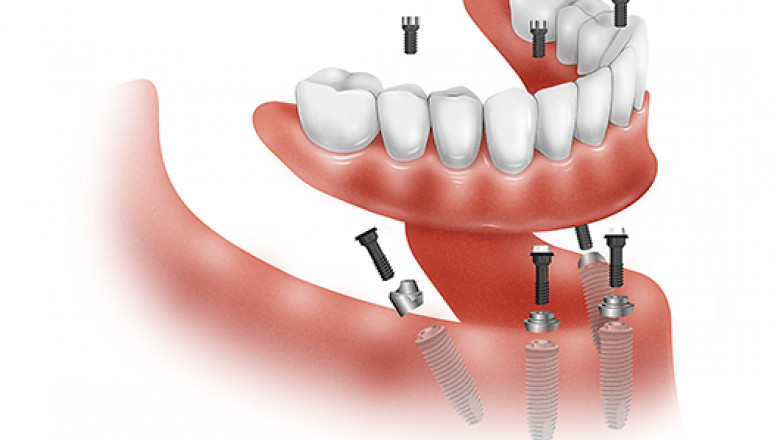views
Dental Implants
Dental implants offer a long-term, reliable solution for replacing missing teeth. If you’re considering dental implants to restore your smile, understanding the process can help alleviate any concerns and ensure you're fully prepared. The dental implant process involves several key steps, each designed to ensure that the implants integrate seamlessly with your jawbone and provide a natural-looking, durable tooth replacement. In this step-by-step guide, we’ll walk you through the entire Dental Implants process to help you know what to expect every step of the way.
Initial Consultation and Assessment:
The first step in the dental implant process is a consultation with your dentist or oral surgeon. During this visit, the dentist will assess your oral health and review your medical history to determine if dental implants are the right option for you. X-rays or 3D imaging will be taken to evaluate the health of your jawbone and the placement of your existing teeth. In some cases, if you’ve experienced bone loss due to missing teeth, your dentist may recommend a bone graft to ensure that there is enough bone density to support the implants.
Planning and Preparation:
Once it’s determined that you're a good candidate for dental implants, the next step is the planning phase. This involves creating a detailed treatment plan that outlines the number of implants needed, the type of restoration required, and the timing of each stage of the procedure. Your dentist will also explain any pre-surgical instructions, such as avoiding certain medications or fasting before the procedure. If bone grafting is required, your dentist will schedule that procedure to ensure that your jawbone is ready for the implant placement.
Placement of the Dental Implant:
The next step in the process is the actual surgical placement of the dental implant. This procedure is typically performed under local anesthesia to ensure that you remain comfortable and pain-free. During the surgery, your dentist or oral surgeon will create a small incision in the gum to expose the jawbone. A hole is then drilled into the bone, where the titanium implant will be inserted. The implant acts as a replacement for the natural tooth root and is designed to fuse with the bone over time in a process known as osseointegration. After the implant is placed, your dentist will close the incision with sutures, and you'll begin the healing process.
Healing and Osseointegration:
After the dental implant is placed, the next phase involves healing and osseointegration, which is the process where the titanium implant fuses with the jawbone. This typically takes several months (usually 3 to 6 months), depending on the individual's healing capacity. During this time, it’s important to follow your dentist’s aftercare instructions, which may include avoiding hard foods and practicing good oral hygiene. The success of osseointegration is critical to the overall stability and longevity of your dental implants, as it ensures that the implant is securely anchored in place.
Attaching the Abutment and Crown:
Once the implant has successfully fused with the jawbone, the next step is to attach the abutment, which is a small connector piece that will hold the replacement tooth or crown. Your dentist will make a small incision in the gum to expose the implant and attach the abutment. After the abutment is secured, a temporary crown may be placed while your custom permanent crown is created. The permanent crown will be designed to match the shape, size, and color of your natural teeth, ensuring a seamless and natural appearance. Once the permanent crown is ready, it will be placed onto the abutment, completing the restoration process.
Post-Treatment Care and Maintenance:
After your Dental Implants procedure is complete, it's essential to follow post-treatment care instructions to ensure the health and longevity of your implants. This includes maintaining proper oral hygiene by brushing and flossing regularly, attending follow-up visits with your dentist, and avoiding habits like teeth grinding or chewing on hard objects. With proper care, dental implants can last a lifetime, providing you with a durable, natural-looking smile. Your dentist will also monitor the condition of your implants during regular check-ups to ensure they remain stable and healthy.
In conclusion, the dental implant process involves several important steps, from the initial consultation to the final placement of your crown. Each stage is carefully designed to ensure the success and longevity of your implants, providing you with a permanent solution to missing teeth. By understanding what to expect during each phase of the process, you can feel more confident and prepared as you embark on your journey to a restored smile. If you’re considering dental implants, schedule a consultation with your dentist to discuss your options and take the first step toward a lasting, beautiful smile.






















Comments
0 comment